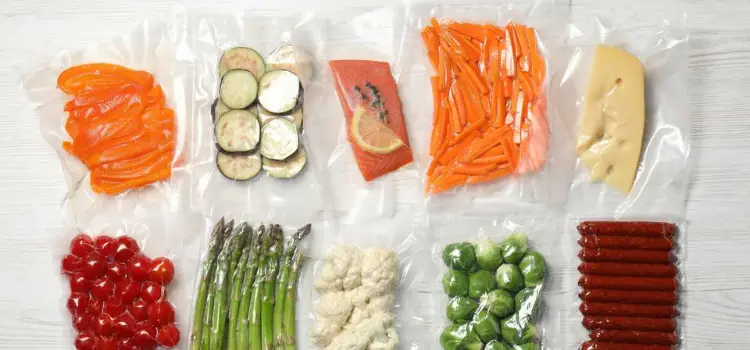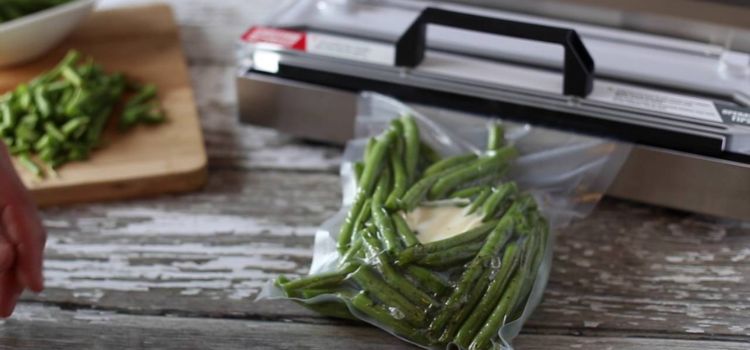As an Amazon Associate, I earn from qualifying purchases

Vacuum seal bags have become a staple in many kitchens, celebrated for their ability to preserve food freshness and extend shelf life. These handy bags are not only used for storing leftovers but also for organizing pantry items and even sous vide cooking.
As their popularity grows, so does the curiosity about their versatility, particularly regarding their safety in the microwave. This article explores whether vacuum seal bags are microwave safe, providing insights into their materials, safety considerations, and best practices for use.
Materials Used in Vacuum Seal Bags
Understanding the materials used in vacuum seal bags is crucial to determining their microwave safety. Most vacuum seal bags are made from a combination of polyethylene and nylon. These materials are chosen for their durability, flexibility, and ability to create an airtight seal. Polyethylene is a common plastic known for its heat resistance and food safety, while nylon adds strength and puncture resistance.
The heat resistance of these materials is a key factor in their microwave safety. Generally, vacuum seal bags are designed to withstand temperatures up to 212°F (100°C), the boiling point of water. However, this does not automatically make them microwave safe, as microwaving can create hot spots that exceed this temperature, potentially compromising the bag’s integrity.
Safety Considerations for Microwaving
Microwaving plastics, including vacuum seal bags, comes with potential risks. When exposed to high temperatures, some plastics can release harmful chemicals, such as BPA or phthalates, into food. Although many vacuum seal bags are now BPA-free, it’s essential to verify this on the packaging.
Improper use of vacuum seal bags in the microwave can lead to health implications. If the bag melts or leaches chemicals, it can contaminate the food, posing health risks. Therefore, it’s crucial to follow manufacturer guidelines and use only bags labeled as microwave safe.
Guidelines for Microwaving Vacuum Seal Bags
To safely microwave vacuum seal bags, follow these guidelines:
- Check the Label: Always check if the vacuum seal bag is labeled as microwave safe. Not all bags are designed for microwave use, and using the wrong type can lead to melting or chemical leaching.
- Use Short Intervals: If microwaving is necessary, do so in short intervals to prevent overheating. This helps avoid creating hot spots that can damage the bag.
- Vent the Bag: Before microwaving, cut a small vent in the bag to allow steam to escape. This prevents pressure buildup, which can cause the bag to burst.
- Avoid Direct Contact with Food: Place the food in a microwave-safe dish and cover it with the vacuum seal bag, rather than microwaving the food directly in the bag. This reduces the risk of chemical leaching.
- Monitor Closely: Keep a close eye on the bag while microwaving. If you notice any signs of melting or warping, stop the microwave immediately.
Alternative Uses for Vacuum Seal Bags

While microwaving vacuum seal bags requires caution, there are numerous other ways to utilize these versatile bags:
- Sous Vide Cooking: Vacuum seal bags are perfect for sous vide, a method of cooking food slowly in a water bath at precise temperatures. This technique enhances flavors and retains nutrients, making it a favorite among chefs and home cooks alike.
- Storage of Non-Food Items: Beyond the kitchen, vacuum seal bags are excellent for storing non-food items. Use them to organize and protect important documents, clothing, or camping gear from moisture and dust.
- Innovative Everyday Uses: Get creative with vacuum seal bags by using them for marinating meats quickly, compressing bulky items for travel, or even waterproofing your phone during outdoor adventures.
Conclusion
In conclusion, while vacuum seal bags offer incredible versatility in food storage and preservation, caution is advised when considering their use in the microwave. Always check for microwave-safe labeling and follow recommended guidelines to ensure safety. By understanding the materials and potential risks, you can make informed decisions about using vacuum seal bags in your kitchen.
These bags are not just for food storage; their applications extend far beyond, offering solutions for cooking, organizing, and protecting various items. Embrace the versatility of vacuum seal bags, but always prioritize safety and proper usage to enjoy their full benefits.
FAQ
Can I microwave a vacuum sealed bag?
Most vacuum sealed bags are not designed for microwave use unless specifically labeled as microwave safe. Microwaving them can cause melting or release harmful chemicals. Always check the manufacturer’s instructions and, if allowed, use short intervals and vent the bag to prevent pressure buildup.
Can you defrost meat in a vacuum sealed bag in the microwave?
Defrosting meat in a vacuum sealed bag in the microwave is generally not recommended unless the bag is marked as microwave safe. To safely defrost, use the microwave’s defrost setting in short intervals, ensuring the bag is vented to allow steam to escape and prevent overheating.
Are vacuum seal bags safe to cook in?
Vacuum seal bags are safe for sous vide cooking, where food is slowly cooked in a water bath. However, for other cooking methods, ensure the bags are labeled as safe for high temperatures. Always follow the manufacturer’s guidelines to avoid melting or chemical contamination during cooking.
As an Amazon Associate, I earn from qualifying purchases